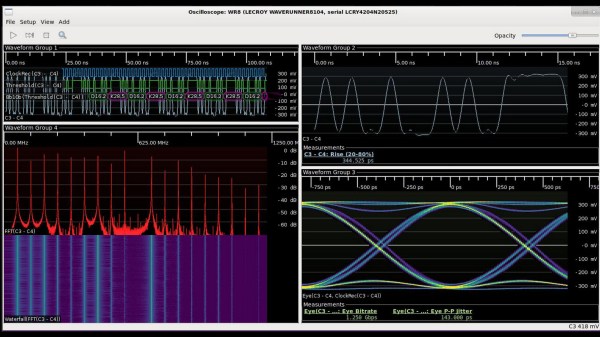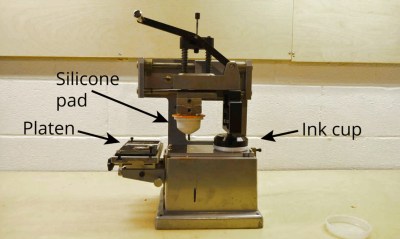One of the most convenient things about modern digital oscilloscopes is that you can access the recorded data on a computer for later analysis, advanced protocol debugging, or simply the convenience of remote capture. The problem is that the software isn’t always ideal. Vendor-supplied utilities are typically closed-source and they try to nickel-and-dime you for every a-la-carte protocol and/or feature. The open-source options come with their own issues, from performance-limiting designs, to incomplete features, to license constraints. Faced with these issues, [Andrew Zonenberg] decided to take matters into his own hands and create glscopeclient, a permissively-licensed open-source remote oscilloscope utility.
The eventual goal is to allow you to do remotely anything you would normally do using the scope’s front panel, plus capture and analyze data on the computer side. The code uses a modular architecture that allows for various backends to talk to different scopes. At the moment, the only backend fully implemented is for LeCroy scopes, although this is enough to demonstrate the power of the idea. The obvious “gl” in the name gives away the secret — the code uses OpenGL for rendering, which allows for some very fancy graphics at high frame rates.
Behind the slick look, however, are some serious debugging tools. Protocol analyzers include USB, UART, JTAG, eye pattern analysis, plus FFT-based spectra with waterfall displays. The code is in GitHub, and most of the announcements and discussion seem to happen on [Andrew]’s twitter account, which you can follow @azonenberg. It’s a work-in-progress, but a serious one, and something we’re going to keep our eyes on.
You can check out a video of the program after the break.
Now, if you want to literally talk to your oscilloscope, we covered that, too.
Continue reading “GlScopeClient: A Permissively-Licensed Remote Oscilloscope Utility”
























